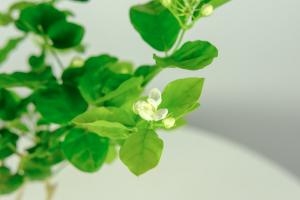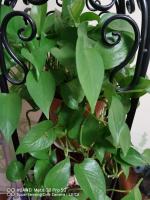1、 Curing method
1. Matrix selection: loose and fertile sandy loam with good drainage and air permeability is suitable. Two parts of river sand, three parts of rotten leaf soil, one part of peat soil and one part of coal cinder can be selected for soil mixing, and a small amount of bone powder can be added as base fertilizer

2. Light management: it likes the environment with sufficient light, which can make its leaves bright green and compact. If it is cultured in a cool environment for a long time, it is easy to lead to sparse leaves, dim leaf color and overgrowth of plants. In addition to shading measures in summer, sufficient sunshine should be given in the other three seasons

3. Water management: it has relatively strong drought tolerance and should not be watered too much in four seasons, which is easy to lead to excessive growth of stems and leaves, loose plant type and beautiful appearance. When the basin soil is dry, it can be watered once, and it needs to be watered thoroughly. Pay attention to avoid rain and ponding in summer and moderate watering in winter to avoid root rot

4. Temperature management: it grows well under the temperature of 18 ℃ - 28 ℃. Note that the room temperature in winter should be kept above 8 ℃

2、 Breeding skills
1. Propagation method: its propagation is relatively easy, mainly by cutting. The survival rate of its cutting is as high as 95%, which can be carried out in spring or autumn. Remove the side branches with leaf clusters at the top with sterilized instruments, cut off the lower leaves, dry the cut slightly, and then insert them into the wet sandy soil. About 20 natural roots can be put into the basin when the root is two to three centimeters long. Note that the humidity of the substrate used for cutting should not be too high, otherwise it is easy to cause yellowing and even rot of the cutting mouth

2. Basin changing method: its basin changing is usually carried out in spring or autumn, and it can be changed once a year. When changing pots, the rotten roots should be cut off and the long old roots should be cut short, which is conducive to promoting the growth of new roots

3、 Problem diagnosis and treatment
1. Rotten roots: it is afraid of waterlogging. At ordinary times, it is necessary to avoid excessive ponding in the basin. Watering should be reduced in winter when the temperature is low, otherwise it is easy to cause rotten roots

2. Pests: the possible pests include root knot nematode and black weevil. Once found, it should be sprayed with insecticides in time. Pests often occur in high-temperature and humid environment. Therefore, appropriate ventilation and cooling measures should be taken for comprehensive prevention and control

4、 Other issues
1. Placement: it has small plant volume and beautiful leaf shape and color. The potted plant can be placed on the bookcase, tea table or dining table, or beside the computer and TV to absorb radiation

2. Toxicity: it has no toxicity and can be used as medicine. It tastes sweet and cool. It is an excellent potted medicine


 how many times do yo...
how many times do yo... how many planted tre...
how many planted tre... how many pine trees ...
how many pine trees ... how many pecan trees...
how many pecan trees... how many plants comp...
how many plants comp... how many plants can ...
how many plants can ... how many plants and ...
how many plants and ... how many pepper plan...
how many pepper plan...































